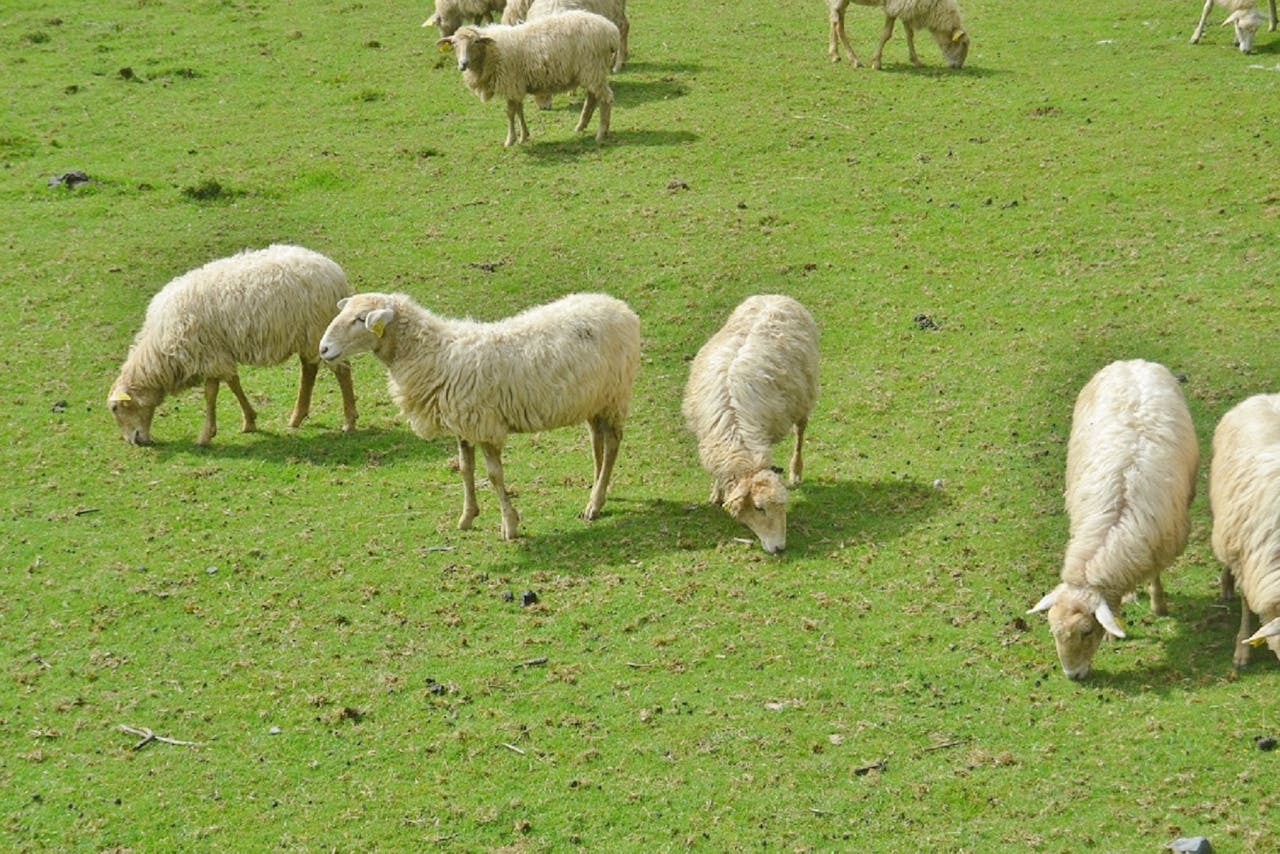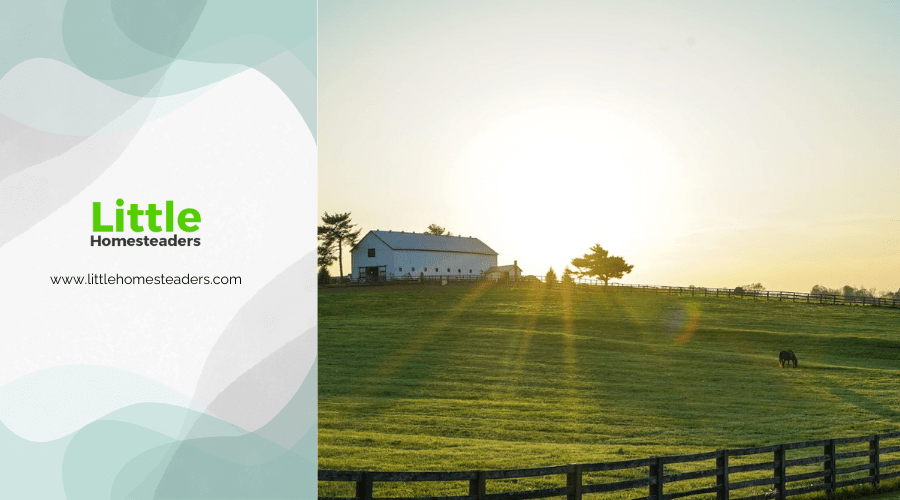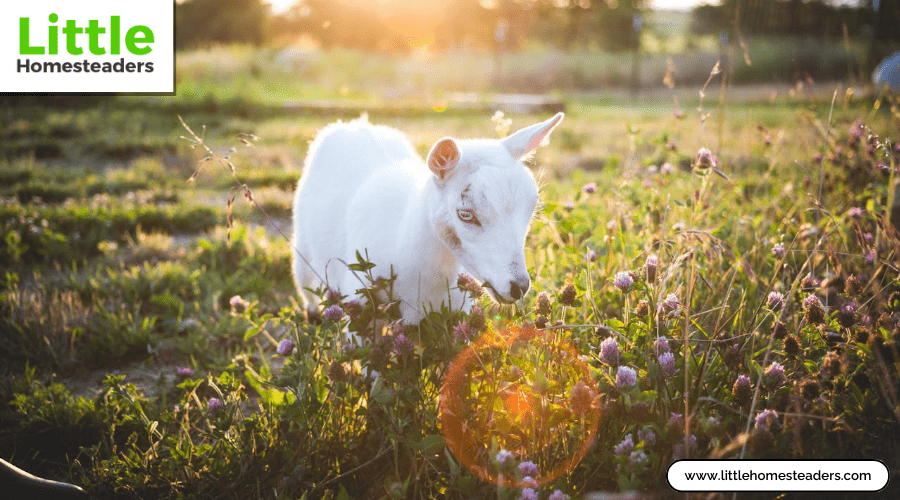Different Types of Homesteading: Which One Is Right for You?

Homesteading has become an appealing path for people looking to live more sustainably, connect with the land, or simply reduce their dependence on commercial goods. With homesteading, you can learn skills that help you become more self-sufficient, from growing your own food to creating a balanced, resourceful lifestyle. But with so many ways to homestead, how do you know which one is right for you? Whether you're in the middle of a city or out in the countryside, there’s a homesteading style that can work for you.
In this guide, we’ll explore different types of homesteading—urban, suburban, rural, small-scale, and large-scale. By the end, you’ll have a clear understanding of what each type entails and be ready to choose the path that best aligns with your lifestyle, resources, and goals.
1. Urban Homesteading
Urban homesteading brings the concept of self-sufficiency to cities. With limited space, urban homesteaders get creative, making the most of every inch. You don’t need a big yard to start your journey; instead, think of balcony gardens, rooftops, or even community spaces.
Techniques and Terms
Urban homesteaders rely on techniques like container gardening, vertical farming, and hydroponics. In container gardening, you can grow plants in pots, which is perfect for small spaces like balconies or windowsills. Vertical farming uses vertical space—think shelves or trellises—to grow herbs or vegetables, even in tight areas. Hydroponics allows you to grow plants without soil, using nutrient-rich water instead.
Example Setup and Financial Considerations
Picture an urban apartment with a sunny balcony: a few pots of tomatoes, herbs, and lettuce, all thriving in containers. You might invest in quality soil, containers, and seeds—expect a start-up cost between $50 and $100, depending on your setup. For a bit more, hydroponic systems can make it easy to grow indoors.
Community and Regulations
One key to successful urban homesteading is finding local resources. Many cities have urban farming communities or community gardens where you can connect with others, share advice, and maybe even trade produce. Keep in mind that urban areas often have regulations regarding animals like chickens or bees, so check your local ordinances.
Pros and Cons
The benefits of urban homesteading include low space requirements, sustainable food production, and low start-up costs. On the flip side, you may face space limitations and regulatory hurdles. With a bit of creativity, though, you can make the most of an urban setup and enjoy the satisfaction of growing your own food.
2. Suburban Homesteading
Suburban homesteading is ideal if you have a backyard or small plot of land. Suburban homesteaders blend homesteading practices into their home life, often transforming their yards into productive spaces that offer fresh produce, eggs, and more.
Key Techniques and Financial Insights
In a suburban setting, you can create raised garden beds to maximize growing space for vegetables and herbs. Rain barrels are another practical addition, helping you conserve water for irrigation. Many suburban homesteaders also raise small livestock like chickens for a fresh supply of eggs. With a modest investment—around $100 for raised bed materials, $50 for a rain barrel, and a bit more for a chicken coop—you can set up a productive mini-farm in your backyard.
Example Setup
Imagine a backyard filled with raised beds for vegetables, a rain barrel collecting water, and a cozy chicken coop in the corner. You might even add compost bins for kitchen scraps, enriching your garden soil with homemade fertilizer.
Community and Regulations
In suburban areas, homeowners’ association (HOA) rules or local zoning laws can impact what you can do on your property. Before you start, check if there are restrictions on raising chickens, adding structures, or composting. Joining local gardening clubs or community gardens can help you learn the ins and outs of suburban homesteading and connect you with other enthusiasts.
Pros and Cons
Suburban homesteading offers the benefits of a bit more space and greater yield potential compared to urban homesteading. However, it may come with HOA restrictions, limited space for larger projects, and a learning curve in adapting suburban landscapes for farming.
3. Rural Homesteading

Rural homesteading is ideal for those seeking a more traditional and expansive approach to self-sufficiency. With more land, rural homesteaders can raise livestock, grow larger gardens, and even produce grains or other staple crops. This option is perfect for those who want to fully immerse themselves in a sustainable lifestyle.
Common Practices and Terms
Rural homesteaders have room for diverse activities like raising chickens, goats, cows, and other livestock. Many also grow orchards, start large vegetable gardens, and produce grains. Renewable energy options, such as solar, wind, or hydropower, are often feasible in rural settings and can support self-sufficiency goals.
Example Setup and Financial Considerations
Picture a rural homestead with chickens, goats, a vegetable garden, and an orchard of apple trees. You might also have solar panels on the roof or a small wind turbine on the property. Initial costs can be substantial—$500 to $1,000 for livestock, plus investments in infrastructure like fencing or barns—but the long-term benefits can be substantial.
Community and Additional Income
Rural homesteading often involves close ties to a community, as neighbors exchange resources, trade goods, and offer support. Many rural homesteaders generate additional income through activities like maple syrup production or timber harvesting, diversifying their operations and offsetting costs.
Pros and Cons
The advantages of rural homesteading include ample space, greater self-sufficiency, and diverse income opportunities. However, this path requires a higher initial investment, significant physical labor, and a commitment to long-term upkeep.
4. Small-Scale Homesteading
If you’re working with a small space—whether urban or suburban—small-scale homesteading techniques can help you make the most of what you have. With creative approaches, even limited areas can support productive gardening and a few small animals.
Key Techniques
Small-scale techniques like raised beds, vertical gardening, and container gardening maximize efficiency. In raised beds, you can grow vegetables in a controlled, nutrient-rich environment. Vertical gardening optimizes limited space, while containers allow you to grow plants on patios or balconies.
Example Setup and Cost Considerations
A small urban yard might feature a few raised beds, a compost bin, and perhaps a small chicken coop. Expect to spend around $200 on materials like containers, soil, and basic tools. If you want to add renewable energy, consider solar panels or a small wind turbine, though these require more investment.
Food Preservation
Small-scale homesteaders often turn to food preservation techniques like canning, dehydrating, and fermenting to extend the shelf life of their produce, especially if space limits the quantity they can grow at one time.
Pros and Cons
Small-scale homesteading is accessible and manageable, with lower initial investment and minimal space needs. The main challenge is limited production capacity, which may require creative solutions for growing and preserving food.
5. Large-Scale Homesteading
For those ready to fully commit to a self-sufficient lifestyle, large-scale homesteading offers unparalleled opportunities. With 10 or more acres, you can create an extensive food production system and raise a variety of animals.
Key Activities and Financial Insights
Large-scale homesteads can support expansive vegetable gardens, orchards, diverse livestock, and renewable energy sources like solar or wind power. Given the scale, you’ll likely need significant investments in infrastructure, tools, and equipment.
Example Setup
A large-scale homestead might include cows, sheep, chickens, and gardens for produce and grains. You might add solar panels, a wind turbine, or even a small hydro system to generate energy. Startup costs can range widely, from a few thousand dollars for basics to tens of thousands for a fully operational homestead with renewable energy.
Community and Additional Income
Community connections are vital for large-scale homesteaders, providing support and opportunities for bartering or selling surplus. Many large-scale homesteaders explore additional income streams, such as selling produce, eggs, or hand-crafted goods.
Pros and Cons:
Large-scale homesteading offers maximum self-sufficiency and potential income sources but requires high costs, labor-intensive upkeep, and a significant commitment.
Choosing Your Homesteading Path
To find the right homesteading path, consider factors like space, time, resources, and your ultimate goals. Whether you dream of full self-sufficiency or simply want a small home garden, start small and build gradually as your confidence grows.
Connecting with local or online homesteading communities can provide invaluable guidance and encouragement. You’ll find experienced homesteaders ready to share tips, offer advice, and help you along your journey.
Overcoming Homesteading Challenges
Homesteading isn’t without its challenges. You may face obstacles like financial constraints, time management issues, and unpredictable weather or pests. To avoid burnout, set realistic goals, prioritize learning, and pace yourself as you expand your homesteading efforts.
Finding community support can be a lifeline during tough times. Seasoned homesteaders often share insights on overcoming these challenges, reminding you that you’re not alone on this journey.
Conclusion
Homesteading is a deeply personal journey, and there’s no one-size-fits-all approach. Whether you’re in a bustling city, a suburban neighborhood, or a rural expanse, there’s a homesteading path suited to your circumstances. Start with the resources you have, grow your skills over time, and, most importantly, enjoy the process of building a more self-sufficient lifestyle. The rewards are plentiful—greater independence, a closer connection to nature, and the satisfaction of creating something meaningful, no matter where you begin.




